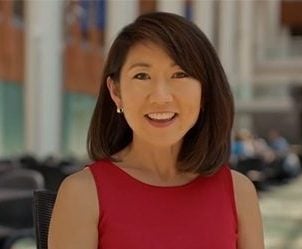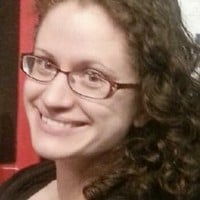CA: What’s one area of the Ross MBA program that you wish applicants knew more about, that maybe isn’t known well enough? Or any misconception that you’d like to correct, in terms of how people think of Ross?
SK: A couple things. Our students’ career outcomes are outstanding. We had the highest career placement rate at graduation among the schools in the Top Ten. They did really well in consulting and tech in particular. Nearly 60 percent of your 2017 grads went into those two industries alone. Among our top recruiters this past were Amazon, Microsoft, Mackenzie, and BCG. One of the misconceptions that people have is that Ross grads primarily take jobs in the Midwest. The fact is that the top destination for our MBAs is the West coast. More than a third go to Seattle, San Francisco, or LA. The second post-MBA destination is the East coast, including New York, Boston, and D.C. So I think that may come as a surprise to a lot of candidates.
CA: About the application specifically, would you please walk us through the life of an application? Would you please walk us through the life of an application in your office from an operational standpoint? What happens between when an applicant clicks submit and when your committee issues a decision? How many times does the application get read? Who’s doing the reading? Does the committee convene to discuss it as a group? How are ties broken? Are there ties? Where does the interview fit into this process?
SK: So when we open up the file on our computers, we typically start with the applicant’s résumé to give us a big picture of who the candidate is. Then we delve into the transcripts, essays and the rec letter. So we want kind of the overview of where has this person been and what has been their path up to this point.
CA: And is that true for anyone who’s taking a look at the application?
SK: We all read it pretty much the same. And the two things we look at in the first read are academic ability and nature of their work experience. So we’re trying to assess: can they do the work of an MBA student, and then will they contribute to the learning experience of their classmates. Based on the first read, some applicants are invited to interview and their application is moved on to a second read. Other applicants are moved on to the second read without an interview invitation. This latter group could be waitlisted and invited to interview in a subsequent round.
Those who are invited have the option to do their one-on-one interview on campus or in their local area with an alum or via Skype. Interviewees who choose to interview on campus or in one of our four international hub locations have the opportunity to demonstrate their interpersonal and communication skills through the team exercise, in addition to the one on one interview.
CA: Can you talk a little bit more about the team exercise, for people who might not know?
SK: So we introduced this about five years ago because we wanted to get a glimpse into how might this candidate interact with other students. We have recommendation letters and we have one-on-one interviews, but those don’t really get at how will they do in an unfamiliar situation with new people when they’re assigned a task. And so much of what they do at business school, at least at Ross, is with teammates and randomly assigned teams for almost everything they do. And those teams change up. So we wanted to see how did they speak, how did they interact, how did they engage. And so the team exercise is where four to six applicants are in a group and they’re given random words, literally out of a bag or they pick them out of the bag, and then as a group they have to decide, which four of the six words they’ve just chosen to use, to create a mock business challenge and solution incorporating those words.
The reason for having them choose random words is so that no one would have a leg up in knowing a certain field or industry. And it really isn’t about business so much as how they interact with each other, how they solved a problem. And so we observe them as they interact and figure out what is this challenge that we’re going to create, and how are we going to solve it based on the four words that we have, for a mock client. Then at the end of the period, about 20 minutes, they all have to get up and present their solution to the challenge to the observers. And every person has to have a speaking role.
So the observers are watching how they interact, how they communicate with each other, and then how they present—because all of those things are going to be things that they have to do in business school and probably beyond.
It benefits students in that it gives them an opportunity to give us one more data point about themselves. It gives them an opportunity to engage with other applicants who are considering Ross and with current students; or, if they do it in one of our international hub locations, with our alumni. Also to meet us and engage with us and hear what we think about the process.
We love the team exercise because it gives us something that the rest of the application can’t tell us. And it’s based on real-time observations, as opposed to something that they could rehearse in advance. Even for the one-on-one interview, people can rehearse because they can anticipate the questions that will be asked. And on so many of the online forums, the questions are posted anyway. So they’re pretty polished. The team exercise in more on the fly, how are you going to deal with the situation.
After the second read, the whole file, including the interview and the team exercise evaluation, is reviewed by the admissions committee, which makes recommendations on individual applicants.
Then the director, Diana Economy, go through the entire list of decisions. And then we cull it down to the target class size based on trying to craft a class that’s going to be diverse, has a good mix of geographic, professional backgrounds, career goals. So that they’re learning a lot of different things from each other and it’s not just 50 percent of the class coming from one industry or ten percent coming from a certain company. We love the diversity in the class and so do the students.
CA: Can you paint a quick picture of your team? So how many people work in admissions overall? How many comprise the committee? How has this number changed in the recent past? And how might it change in the near future?
SK: Well, the admissions committee consists of me and the director, five associate directors, one assistant director, two program coordinators, and a dotted line to our senior associate director for admissions operations. His team supports applications and processing for all of the school’s degree programs. So the director, Diana Economy, manages the recruiting strategy, works closely with our marketing department to develop marketing and communications strategy, and oversees the associate directors. Each of the associate directors leads recruiting for different regions and segments, as well as different parts of our recruiting and admissions process.
For example, our webinars, our major on-campus recruiting events, the evaluation process, the waitlist process. And they also interface with our various student clubs and centers and institutes. So they’re responsible for really being up to speed on what’s happening with each of those constituencies. The assistant director manages our interview process, our on campus visit program, student ambassadors, and interviewers. And all of them, from the director to the assistant director, are a part of the admissions committee and read applications. The program directors make our on- and off-campus recruiting events happen from start to finish. And then the interviews are conducted by second-year MBA students and alumni around the world.
The number of people on the admissions committee has been fairly consistent over the last few years. And we’ve had the great fortune of having a team that’s been together for many years. There’s a lot of turnover in admissions offices across the country, but we’ve been really lucky to have our team for a number of years. But this summer two of our admissions directors will be moving out of state with their families. So we’re in the process of hiring for their positions.
CA: How does your team approach the essay portion of the application, specifically? What are you looking for as you read the essays? Are there common mistakes applicants should steer clear of? One key thing they should keep in mind as they sit down to write?
SK: So we use the essays to give us a glimpse into the candidate’s personality and potential fit with our culture. This year we ask candidates to answer three short-answer questions, about 100 words each, where we’re trying to understand how the applicant thinks about themselves, and how they think about and interact with others. A common mistake that applicants make is thinking that, because it’s business school, all essays should be based on their work experience. While that’s important, we also want to get a sense of the applicant as a person. What kind of classmate, teammate, and leader will they be? And that’s based on more than who they are in a professional setting. As far as the one key thing for applicants to know, I think that they think there’s a right answer or even a right type of answer. But there isn’t. The key is to be authentic. And I’ll throw in succinct. More is not necessarily better.





